Family : Chaetodontidae

Text © Giuseppe Mazza

English translation by Mario Beltramini
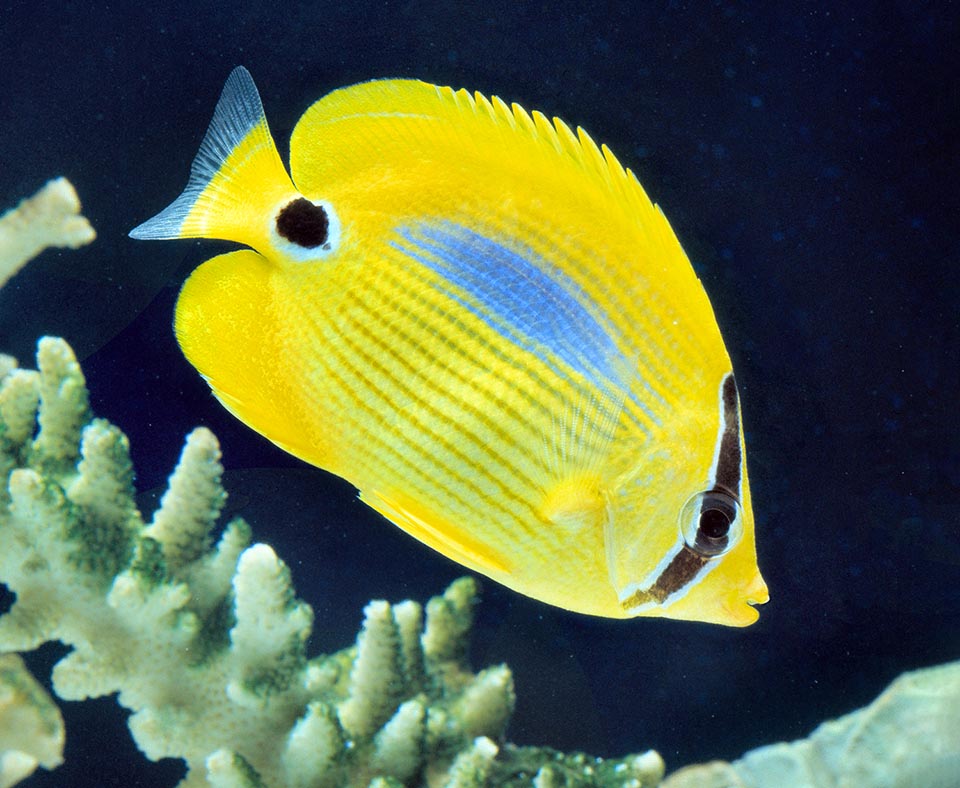
Chaetodon plebeius is present in the tropical waters of Pacific and of eastern part of Indian Ocean, up to Maldives © Giuseppe Mazza
The Blueblotch butterflyfish (Chaetodon plebeius Cuvier, 1831) belongs to the class of the Actinopterygii, the ray-finned fishes, to the order of Perciformes and to the colourful family of the Chaetodontidae.
The name of the genus Chaetodon comes from the Greek “χαίτη” (khaite), hair, and “ὀδούς” (odous), tooth, due to the “bristle-shaped teeth”.
The name of the species plebeius means in Latin “plebeian”: that part of the Roman people, opposed to the patricians, who did not enjoy all the rights and having humble tasks. Maybe this name has been given because it is very common, due to its modest size and the habit it has of cleaning the other fishes from the parasites.
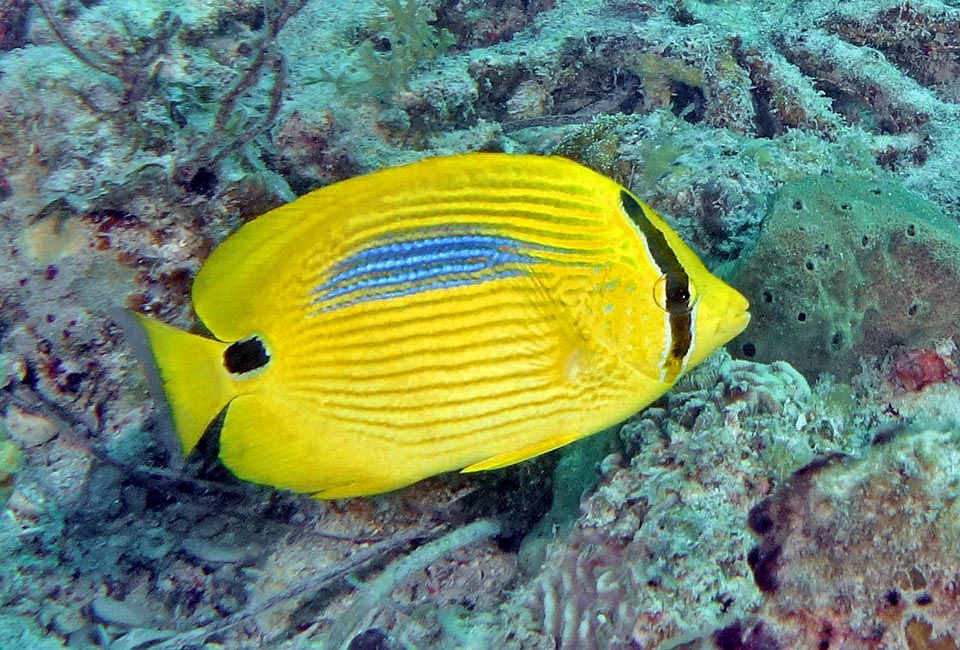
15 cm long at most, it lives in shallow waters, no more than 10 m deep, on the border of the reefs sheltered by the madreporic formations © John Turnbull
Zoogeography
We manly find it in the tropical waters of the Pacific Ocean, but also in some areas of the Indian Ocean, for instance at the Maldives, in Sri Lanka and in Thailand.
It is at home in Australia, Indonesia, New Guinea, New Caledonia, Philippines, China and Taiwan up to southern Japan. Eastwards, it reaches the Fiji and Tonga islands, southwards Norfolk Island, Lord Howe Island and Easter Island.
Ecology-Habitat
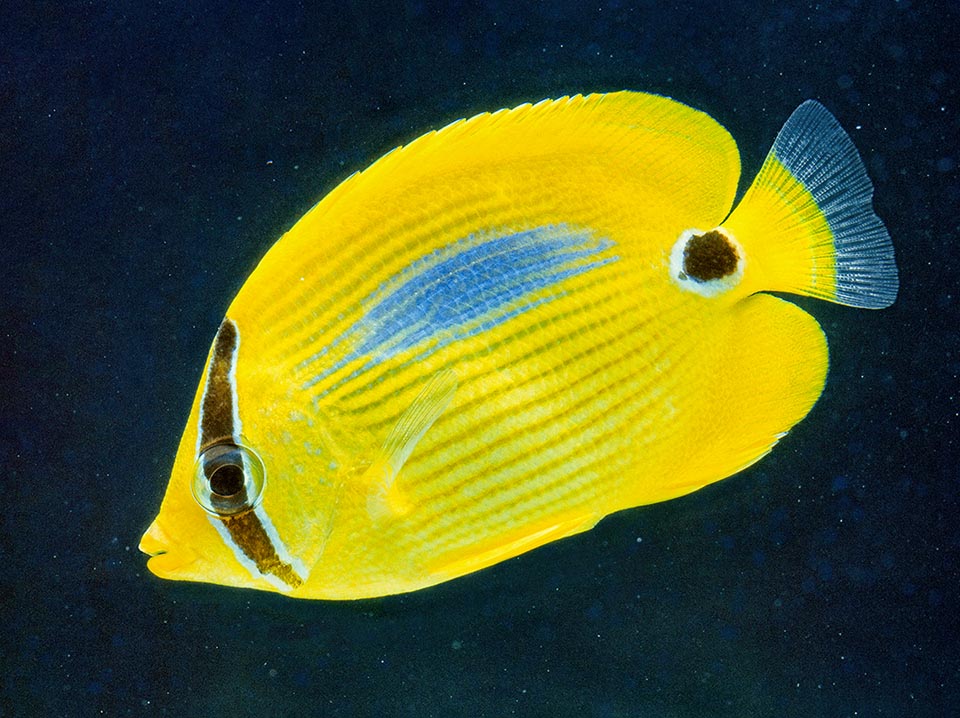
The Latin name of plebeian, the poor class in old Rome, comes from the fact that it is very common and humbly frees the other fishes from skin parasites © Giuseppe Mazza
It lives in shallow waters and along the borders of the reefs, among the madrepores rich of ramifications and caches, up to 10 m of depth.
Morpho-physiology
The Blueblotch butterflyfish may reach the 15 cm, but usually it is smaller. The body is flat, more or less oval, with the snout slightly pointed.
The dorsal fin has 13-15 spiny rays and 16-18 soft; the anal has 4-5 spiny rays and 36-41 soft; the ventral and the pectoral ones are unarmed; the caudal is more or less blunt.
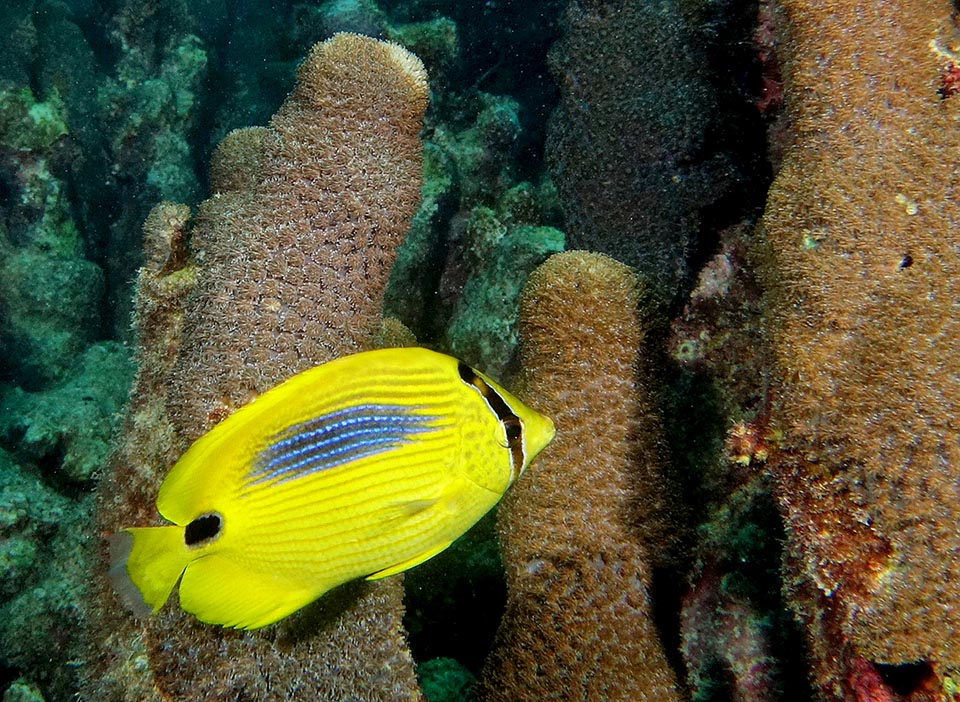
In fact, it is a strictly carnivorous fish eating also the polyps of Pocillopora damicornis, a madrepore very resistant to the global warming © John Turnbull
The overall colour is yellow, with longitudinal striae and a typical light blue dot stretched in the upper part of the body. Then, there is a black spot on the caudal peduncle, edged of paler blue, like that close to the vertical band hiding the eye.
Ethology-Reproductive Biology
The alimentation is carnivorous, with a diet based on the polyps of the Pocillopora damicornis, but also on other cnidarians and small organisms, for instance, the ectoparasites which it often seizes, such as the Labroides dimidiatus on the other fishes.
It lives solitary or paired, especially during the reproductive period. After the fecundation, the eggs are entrusted to the currents.
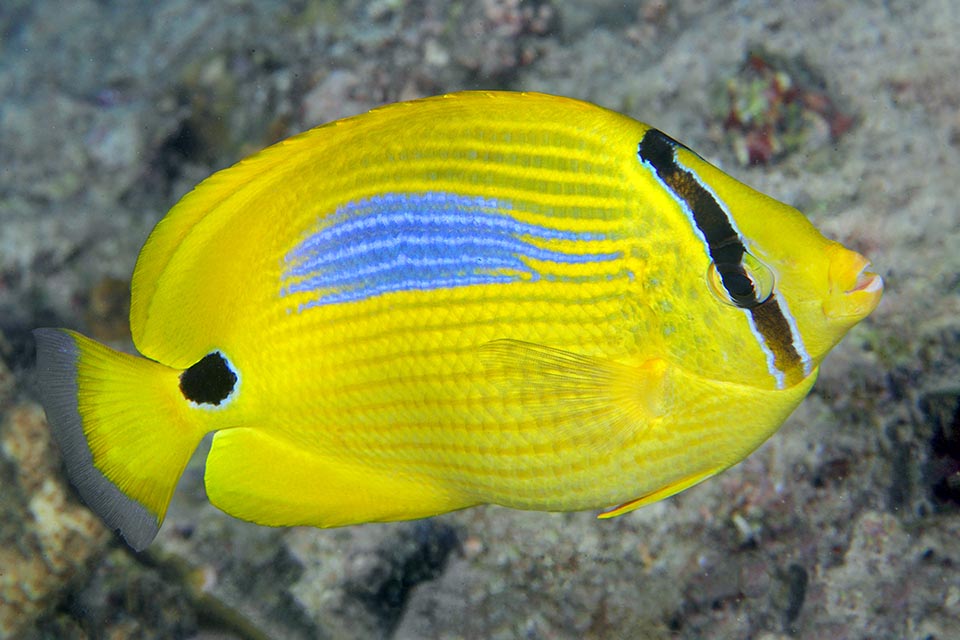
This fact, united to its excellent resilience, render nowadays very low the vulnerability risk of the species © Klaus Stiefel
The populations can double in less than 15 months, and, apart the aquaria trade, it is not chased by the man because it does not have any value as food. The fishing vulnerability index is very low: only 10 on a scale of 100.
It is true that the continuous global warming, by destroying the corals, could be a serious element of risk, but the Pocillopora damicornis has proved to be one of the most resistant madrepores,
Synonyms
Chaetodon cordiformis Thiollière, 1857; Megaprotodon maculiceps Ogilby, 1910; Megaprotodon plebeius Cuvier, 1831.
→ For general information about FISH please click here.
→ For general information about BONY FISH please click here
→ For general information about CARTILAGINOUS FISH please click here.
→ To appreciate the BIODIVERSITY of BONY FISH please click here.
→ To appreciate the BIODIVERSITY of CARTILAGINOUS FISH please click here.
